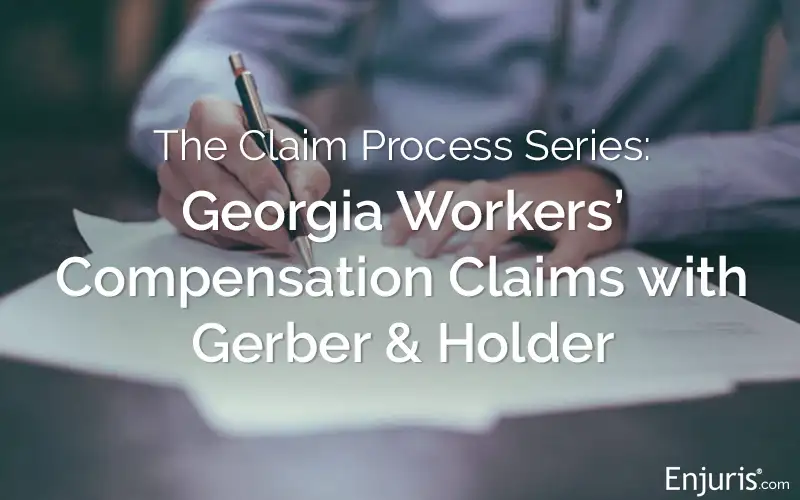
Are you an Atlanta native? Or new to the area?
Either way, there’s 1 thing we Atlantans know for sure: driving in “Hotlanta,” as out-of-towners call it, is no easy task.
But even if you’re a born and bred Georgia peach, you might not know where the most car accidents happen at Atlanta metro-area intersections.
When a local Channel 2 Action News reporter ranked the most dangerous intersections in Atlanta, based on data gathered in 2015, here’s what he learned:
| Most dangerous Atlanta metro intersections (2015) | ||
|---|---|---|
| Ranking | Intersection | No. of accidents in a single month |
| 1 | Memorial Drive & North Road, Stone Mountain | 22 |
| 2 | East Park Place & Stone Mountain Highway, Stone Mountain | 20 |
| 3 | Covington Highway & Lithonia Road, Lithonia | 19 |
| 4 | Cobb Place Boulevard & Earnest Barrett Parkway, Kennesaw | 18 |
| 5 | Jimmy Carter Boulevard & Peachtree Industrial Boulevard, Norcross | 17 |
| 6 | State Bridge Road & Medlock Bridge Road, Johns Creek | 15 |
| 7 | Briarcliff Road & North Druid Hills Road, DeKalb County | 13 |
| 8 | Butner Road & Camp Creek Parkway, Fulton County | 13 |
| 9 | Steve Reynolds Boulevard & Venture Drive, Duluth | 13 |
| 10 | Piedmont Avenue & Monroe Drive, Atlanta | 12 |
What makes these intersections dangerous?
Any intersection can be dangerous, especially when a driver is distracted or inexperienced, or if other factors like weather, visibility, or reckless driving contribute to accidents. But while all of those factors can be present anyplace you drive your car, there are sometimes reasons why certain highways or intersections might be more likely to have accidents than others.
These specific issues were identified with the intersections listed above:
- Unusual angles. Most of these top 10 intersections are “non-standard,” or have several roads that intersect, rather than just 4 points. It can be confusing for a driver who’s unfamiliar with the traffic patterns and it can also be difficult to see or react to vehicles coming from several different directions at the same time.
- Geographic area outside the city. Most of these intersections are outside the city of Atlanta. They’re considered part of the Atlanta metro area but they are suburban roads. Often, suburban and rural areas have more open-road driving and fewer stops. In addition, you have a lot of drivers who are so familiar with the area that they might drive on “auto-pilot” and be less careful where there’s generally less traffic and they know the roads so well.
- Varied traffic patterns. Several of these intersections involve regular streets that meet high-speed highways.
Atlanta car accident statistics
The Governor’s Office of Highway Safety in Georgia issued a report based on data gathered from the National Highway Traffic Safety Administration. The report indicated that in 2018 (the most recent year for which data are available), there were 1,504 traffic deaths in Georgia. This reflects a decrease from recent years, and there was also a decrease in the number of fatalities. Georgia saw 994 passenger vehicle fatalities in 2018.
How to avoid a car accident injury (7 tips)
- Avoid distracted driving. Distracted driving is an issue everywhere — not just in Atlanta. Distracted driving is anything that takes your hands off the wheel, eyes off the road, or mind off the task of driving. This could include using your phone or another device, eating, personal grooming, paying attention to passengers, or being distracted by something happening outside your car.
- Never drive under the influence of alcohol or drugs. In Georgia, a driver can be arrested for DUI if they have a blood alcohol content of .08 or higher. Although that’s one good reason not to drink and drive, the other major reason is that it can be dangerous or fatal to you, your passengers, or anyone else who shares the road.
- Drive within the speed limit. Alternately, stay within the flow of traffic. If the speed limit is 50 miles per hour but there’s heavy traffic, bad weather, or something happening that’s slowing things down, don’t try to travel 50 just because it’s technically legal to do so. Drive at a safe speed based on the speed limit and traffic flow.
- Keep at least 1 car length between you and the car in front of you. If the roads are wet or the weather is bad, make it at least 2 car lengths (or more). It’s important to have time to react to sudden stops or swerves ahead and have the ability to stop your car safely before a collision.
- Wear your seatbelt. Georgia requires any person age 18 or older to wear a seatbelt while driving or as a front-seat passenger. A passenger who is age 17 or younger must wear a seatbelt in the back seat, too.
- Drive defensively. In other words, it’s not always about you. You might be safe, careful, and conscientious all the time, but that isn’t everything when it comes to driving. Other people’s actions matter and you need to be prepared not only for your own driving but also to anticipate other drivers’ moves. And, sometimes you just can’t predict what someone in another vehicle will do.
If you spot an aggressive driver, you should make an extra effort to stay as far away from that vehicle as possible. Aggressive driving might include tailgating, speeding, weaving in and out of cars, abrupt lane changes, preventing other cars from passing or changing lanes, aggressive honking, and other behaviors.
In addition, look out for what’s happening ahead on the road. If you see a sudden stop a distance ahead — or something like a child running into the road, a tree limb falling, debris coming loose from another vehicle, or other issues — be aware that the cars ahead of you will likely react to that, and you’ll need to, as well. - Use your headlights. In Georgia, you’re required to use headlights from a ½ hour after sunset to a ½ hour before sunrise, in rain, or anytime when you need additional visibility. But headlights always make your vehicle more visible, even in daylight, and can help to reduce the likelihood of an accident.
5 steps to take after a car accident
If you’re in a car accident, there are a few steps you can take to preserve a legal claim if it becomes necessary.
- Call 911. A police report is an important piece of evidence, even if the accident seems minor. Even if no one is injured and it appears that it’s only minor vehicle damage, sometimes a mechanic will find things wrong on a car that aren’t visible from the outside. Having a police report helps prove how the accident happened and what (and who) was present at the scene.
- Seek a medical evaluation. Even if you believe you’re uninjured, it’s important to be checked by a doctor at a hospital, urgent care center, or your own medical office. Some car accident injuries can take days or weeks to appear. If you don’t have an immediate medical exam, it will be harder to prove that your injuries are the result of the collision.
- Obtain witness contact information. If there are witnesses to the crash, their observations could be important. You don’t need to worry about taking a statement, but it’s a good idea to write down their names, phone numbers, addresses, and other contact information so that your lawyer can get in touch with them later.
- Take note of the scene. There might be several factors that contributed to the crash that will be important in proving your claim. It’s a good idea to take car accident photos that show how weather conditions, street signs or signals, or other factors might have played a role. This evidence can be important to your insurance claim or a legal case.
- Contact a lawyer before speaking with the insurance company. You should file a report with your insurance company right away. Some insurance companies won’t cover a claim if too much time has elapsed between the date of the accident and the report. But you’re never required to speak with the other driver’s insurance company, and you shouldn’t discuss your liability. If there are questions about who was liable and to what extent, a lawyer can help to minimize your liability and help you recover the damages you’re owed.



